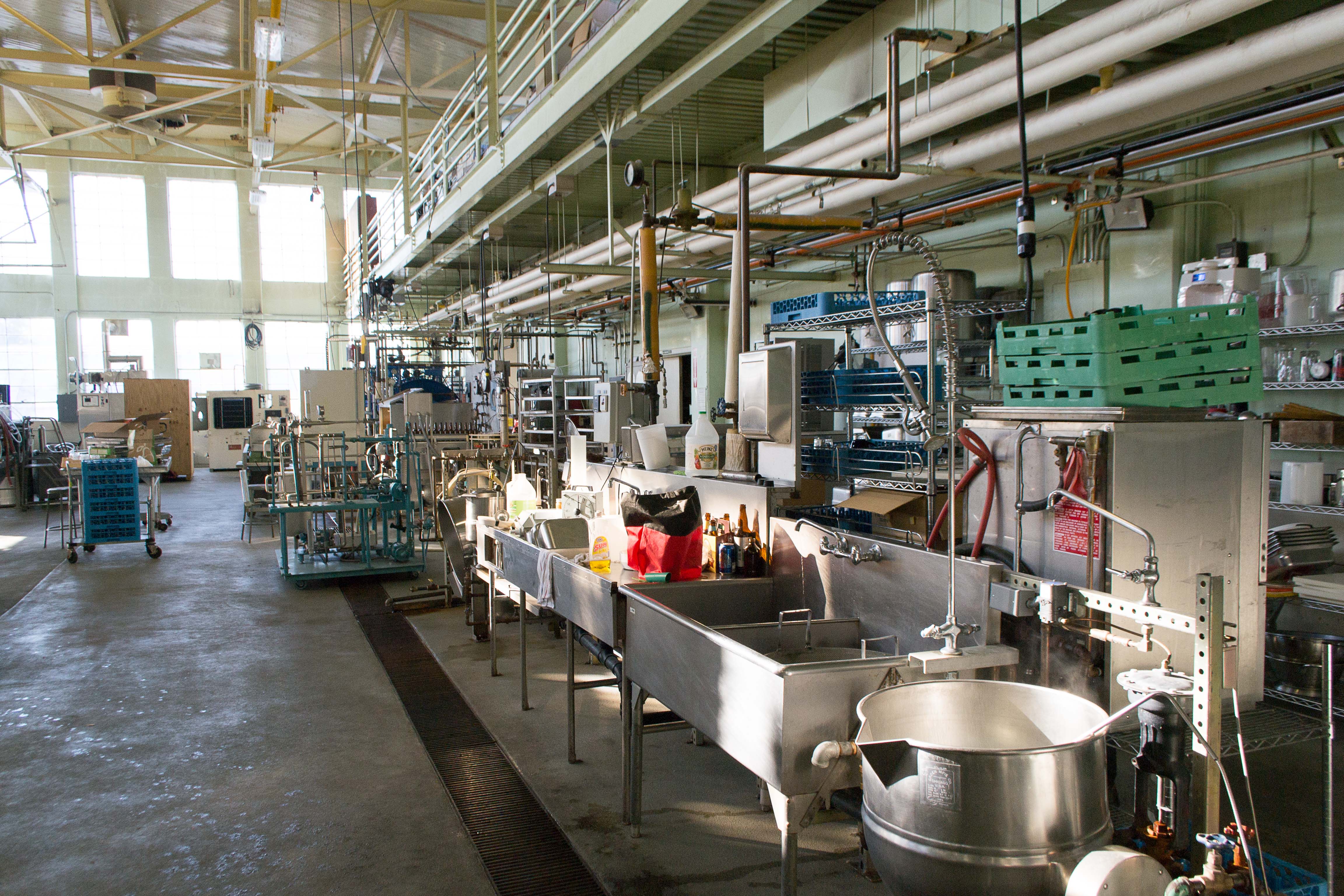
Linker Exchange as facile method for post-synthetic modification of ß-ketoenamine linked Covalent Organic Frameworks.
Sign Up to like & getrecommendations! Published in 2023 at "Macromolecular rapid communications"
DOI: 10.1002/marc.202300046
Abstract: Post-synthetic linker exchange performed on covalent organic frameworks (COFs) has become an important method to introduce functional building blocks into their backbone and thus to tune their chemical and physical properties. However, the linker exchange… read more here.
Keywords: linker exchange; exchange; post synthetic; method ... See more keywords

Influence of post-synthetic modifications on the composition, acidity and textural properties of ZSM-22 zeolite
Sign Up to like & getrecommendations! Published in 2018 at "Catalysis Today"
DOI: 10.1016/j.cattod.2017.04.042
Abstract: Abstract In this work, an extensive investigation of the preparation of a large body of desilicated ZSM-22 zeolites and their basic characterization is presented. We investigate the effects of the properties of the starting zeolite,… read more here.
Keywords: post synthetic; modifications composition; composition acidity; synthetic modifications ... See more keywords

Post synthetic modification of Zr-MOF with phenylboronic acid: Fluorescence sensing of sialic acid
Sign Up to like & getrecommendations! Published in 2022 at "Dyes and Pigments"
DOI: 10.1016/j.dyepig.2021.109839
Abstract: Abstract Luminescent metal-organic frameworks (LMOFs) have become an important class of fluorescence sensing materials, whereas direct applications of LMOF for identifying analytes still remain a challenge. Post synthetic modification (PSM) is an effective strategy to… read more here.
Keywords: post synthetic; fluorescence; synthetic modification; fluorescence sensing ... See more keywords

Post-synthetic Ti exchanged UiO-66-NH2 metal-organic frameworks with high faradaic efficiency for electrochemical nitrogen reduction reaction
Sign Up to like & getrecommendations! Published in 2021 at "International Journal of Hydrogen Energy"
DOI: 10.1016/j.ijhydene.2021.07.079
Abstract: Abstract Electrochemical nitrogen reduction reaction (NRR) is a promising approach for NH3 production to take place of the traditional Haber-Bosch process, which is still limited by the low NH3 yield rate and low Faradaic efficiency.… read more here.
Keywords: electrochemical nitrogen; post synthetic; faradaic efficiency; reduction reaction ... See more keywords

Significant improvement in antibacterial property of ZIF-8 decorated graphene oxide by post-synthetic modification process
Sign Up to like & getrecommendations! Published in 2021 at "Journal of environmental chemical engineering"
DOI: 10.1016/j.jece.2021.105887
Abstract: Abstract The effects of different ammonium hydroxide loadings towards morphological and antibacterial properties of ZGO composites in a straightforward post synthetic-modification were comprehensively investigated. Fourier Transform Infrared Spectroscopy (FTIR) result indicated a successful modification of… read more here.
Keywords: synthetic modification; modification; significant improvement; post synthetic ... See more keywords

Effect of bacterial nanocellulose post-synthetic processing on powders and rehydrated suspensions characteristics
Sign Up to like & getrecommendations! Published in 2020 at "Journal of Food Engineering"
DOI: 10.1016/j.jfoodeng.2020.109994
Abstract: Abstract Bacterial nanocellulose (BNC) is synthetized as hydrated sheets difficult to mix or store and commercialize. Therefore, to incorporate in food matrices, BNC should be previously processed to obtain powders easily resuspended, which are able… read more here.
Keywords: nanocellulose post; post synthetic; synthetic processing; effect bacterial ... See more keywords

Synthesis and post-synthetic modification of UiO-67 type metal-organic frameworks by mechanochemistry
Sign Up to like & getrecommendations! Published in 2017 at "Materials Letters"
DOI: 10.1016/j.matlet.2017.03.140
Abstract: Abstract Herein, we report the synthesis of zirconium metal-organic frameworks by a mechanochemical route. The frameworks are obtained by the coordination of a zirconium cluster with the biphenyldicarboxylic acid linker to obtain UiO-67 or with… read more here.
Keywords: organic frameworks; synthetic modification; post synthetic; metal organic ... See more keywords

Post-synthetic modification of MIL-125 with bis-quinoline Mannich bases for removal of heavy metals from wastewater
Sign Up to like & getrecommendations! Published in 2019 at "Microporous and Mesoporous Materials"
DOI: 10.1016/j.micromeso.2018.12.018
Abstract: Abstract Ti-based metal-organic frameworks (NH2-MIL-125) were post synthetic modified through a facile strategy using bis-quinoline Mannich bases producing MIL-125-HQ. The modified material (MIL-125-HQ) was used as an absorbent for uptake of the heavy metals from… read more here.
Keywords: mil 125; quinoline; mannich bases; bis quinoline ... See more keywords

Designing a sensitive luminescent probe for organophosphorus insecticides detection based on post-synthetic modification of IRMOF-3
Sign Up to like & getrecommendations! Published in 2020 at "Journal of Molecular Structure"
DOI: 10.1016/j.molstruc.2019.127000
Abstract: Abstract Metal organic frameworks (MOFs) represent an excellent material for chemical species sensors because they contain various optically-active centers, different ligands, variable metals, porosity and various guest species. This may be rationally chosen to afford… read more here.
Keywords: post synthetic; irmof; synthetic modification; modification irmof ... See more keywords

Post-synthetic modification of tetraphenylcyclopentadienone based hypercrosslinked microporous polymers for selective adsorption of CO2
Sign Up to like & getrecommendations! Published in 2021 at "Materials Today Communications"
DOI: 10.1016/j.mtcomm.2021.102251
Abstract: Abstract Microporous organic polymers (MOPs) are considered as one of the best candidates for CO2 adsorption and removal. In this work, the authors have synthesized two microporous hyper crosslinked polymers PCP-1 and PCP-2 from a… read more here.
Keywords: co2; adsorption; synthetic modification; pcp ... See more keywords

Efficient removal of Pb(II) by amine functionalized porous organic polymer through post-synthetic modification
Sign Up to like & getrecommendations! Published in 2017 at "Separation and Purification Technology"
DOI: 10.1016/j.seppur.2017.01.026
Abstract: Abstract Porous organic polymers (POPs), a new class of porous materials constructed by organic molecular building blocks, have attracted much attention. To design POPs with both good porosity and specific-task functionalization is still a critical… read more here.
Keywords: functionalized porous; post synthetic; synthetic modification; porous organic ... See more keywords